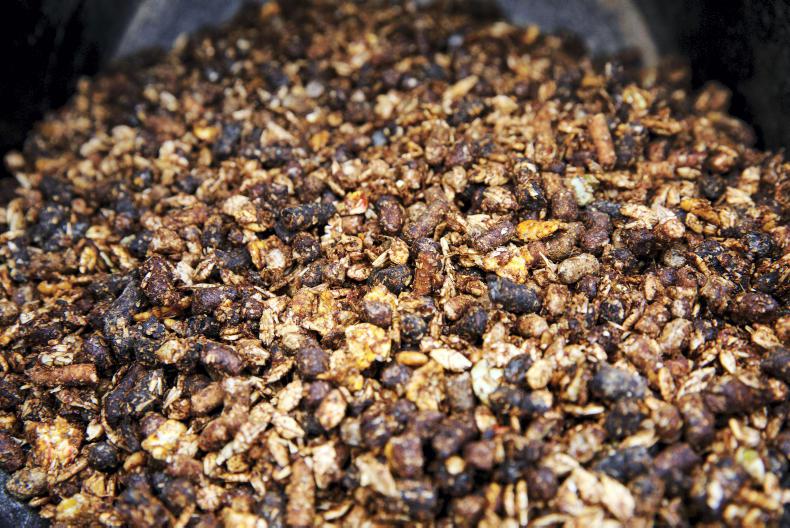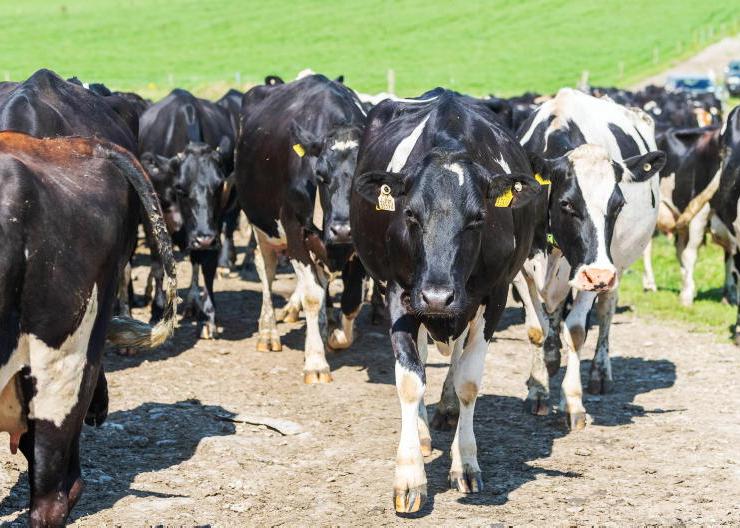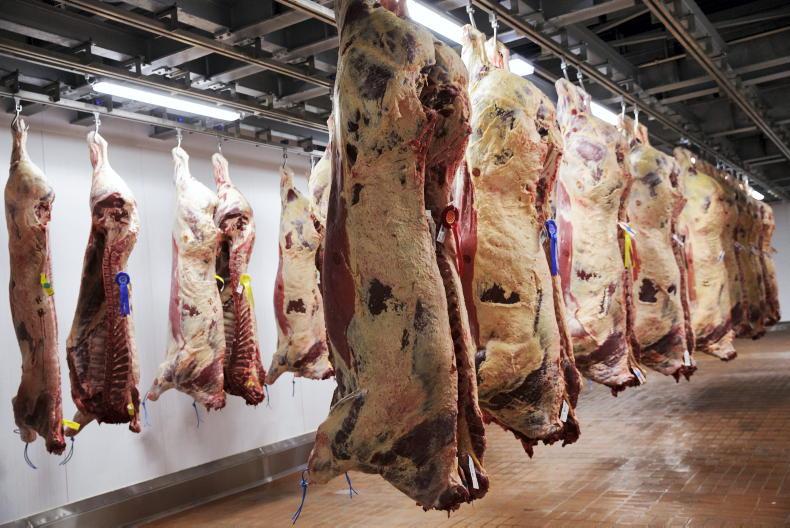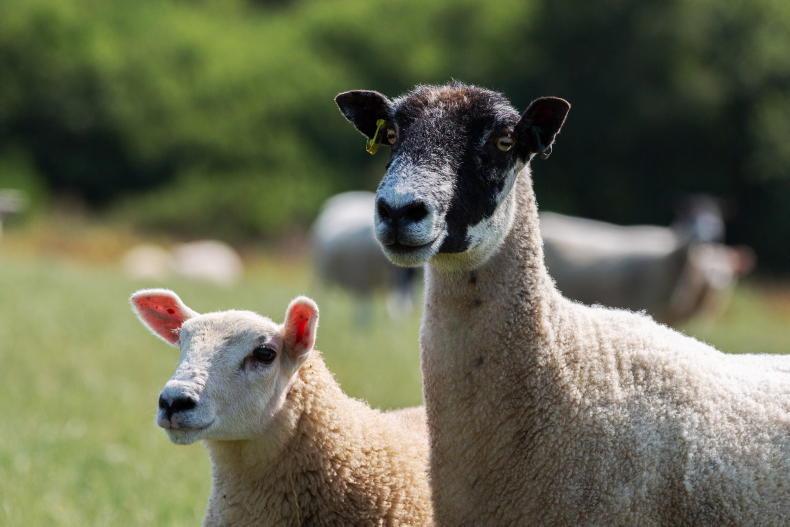Preparation:
creep feeding
By the time a calf is six-and-a-half months old, 75% of its feed requirement should be met by grass or concentrates rather than milk. At this stage, a calf will convert feed to liveweight more efficiently than at any other time in its life, so creep feeding to maximise weaning weights will be very cost effective.
Where farms are aiming to finish all male progeny under 16 months, creep feeding is very important for calves.
The clock is always ticking in an under-16-month system and there is no room for days not putting on weight. To hit targets, under-16-month bulls need to put on 1.35kg/day from birth.
During weaning liveweight gains can drop considerably and throw you off target. Weanlings being sold in the next few weeks will also benefit from creep feeding in the form of extra liveweight gain and an easier weaning process.
Weaning is a stressful time for the suckled calf. Not only does it lose the comfort of being with its mother, but it also loses one source of nutrients – milk. Supplying creep feed before weaning can help smooth the transition and the extra source of nutrients can compensate for the reduction in milk yield as lactation progresses.
When there is less stress at weaning, there is a reduced incidence of pneumonia.
Larger calves will also be less prone to disease.
A further advantage of creep feeding is that the weaning check is reduced because the calf is already familiar with concentrate feed and the rumen microbes are adapted for a change of diet.
Creep feeding is extremely efficient, owing to the calf’s high potential growth rate. Since the rest of the calf’s diet (milk and forage) already more than meets the requirement for maintenance, all the nutrients from the creep are used for growth.
This means the conversion of creep to liveweight gain is efficient at around 4kg feed to 1kg of gain, and is economically worthwhile. Ideally creep feeding should start six to 10 weeks before weaning.
With very milky cows or in situations where it is tricky to creep feed, starting four to six weeks before weaning will still help reduce the weaning check. As a rough guide, male calves for sale should be getting 2-3kg/head/day and heifer calves 1-1.5kg/head/day.
Male weanlings being kept on farm could be reduced to 1.5kg and heifer calves reduced to 1kg.
Creep feed contents
Look for ingredients such as flaked maize, rolled barley, soya, peas, beet pulp and molasses. Toasted and flaked ingredients tend to be a little more expensive. Aim for 1416% crude protein on an as-fed basis. Energy should be high supplied from a grain base. An energy density of 0.95 UFL or above is recommended. Oil content can be up to 4%. A fibre content of 8-10% is recommended to prevent digestive upsets. Make sure the ration is balanced for minerals and vitamins. It can sometimes help to start with a few bags of a higher-spec ration. Feeding calves via a trough will make sure all calves are consuming equal amounts of creep.
The weaning period is one of the most stressful periods an animal will go through and because of this calves are open to disease challenges such as pneumonia.
This is no different than yourself being stressed or overworked around calving, for example, and then getting sick with a cold or flu as a result.
The stress lowers immunity levels and increases the chances of animals becoming ill.
On many farms, unvaccinated weanlings are taken off a cow the morning of a sale, transported to a mart, spend a day in the mart mixing with other cattle and other disease challenges, and are then transported to the buyer’s destination, into a new environment and new diet. And we wonder why these calves get sick.
High stress levels will also mean reduced performance
Having a more planned process would have benefits for both seller and purchaser.
High stress levels will also mean reduced performance where animals don’t eat for a number of days and this growth check can be substantial where the weaning process isn’t carried out properly.
This can be detrimental in a finishing system where animals need to be performing every day of their lives to hit target weights. Reducing this growth check will mean earlier finishing. Managing weaning and looking after weanlings over the next few months is critical to the success of any beef system.
Creep grazing
Forward creep grazing calves ahead of cows can help reduce the cow-calf bond and in turn reduce stress levels at weaning. Calves can be encouraged into the next paddock to graze via a creep gate, raising the fence in one place or by feeding some ration in troughs in the next paddock. This also means they are getting the best possible grass ahead of cows.
Vaccination
Where there have been previous issues on the farm with pneumonia, vaccination is a must. Start this process early as some treatments require booster shots given four to six weeks apart. Full cover won’t be achieved until the second shot is given.
Abrupt weaning: This is where cows and calves are separated into two groups on one day. This leads to a lot of stress on operator, cow and calf, and should be avoided if at all possible. Calves can take a number of days/weeks to get back to normal feed intake levels and thrive.
Fence line weaning: Popular in large ranches in the US, this is where cows and calves are split on one day but cows are put in one paddock and calves are put in an adjacent one. The theory is that when cows and calves can still see each other it reduces stress levels. A very good fence is needed and severe damage can be done to paddocks along this fence through stock moving up and down along it. Given the weather and ground conditions, it probably isn’t a runner at the moment but could be an option where autumn calves are weaned in spring.
Staggered weaning: This is where three to four cows are removed from the herd every four to five days. This can vary depending on herd size. Cows can be quietly removed from a paddock or by separating them in a yard. The theory is calves still have access to other cows in the field and don’t “notice” their own mothers being removed. Weaning will take longer but it can reduce stress levels. Removed cows can be put to a bare paddock or shed to help dry off. This method has been used successfully on Tullamore Farm for the last few years.
Nose paddles: In this increasingly popular method, a paddle is fitted to a calf’s nose and doesn’t allow the calf to suck its mother. This means the calf can remain in the field with its mother getting full contact and reducing stress levels. Farmers who have used these seem to be very happy with them and have used them again.
Shed weaning While not ideal, this may have to be considered on some farms. Heavy rain across much of the country over the past seven to 10 days has meant grazing conditions have deteriorated and cattle have been housed on some farms. Housing is a stressful enough experience without putting weaning on top of that. One option is to lock calves in an adjoining pen during the day and allow them suck twice daily, reducing to once daily after a few days and then stopping altogether. Creep feed should be offered in the creep area during the day when the calf is separated from the cow to encourage eating.
Preparation:
creep feeding
By the time a calf is six-and-a-half months old, 75% of its feed requirement should be met by grass or concentrates rather than milk. At this stage, a calf will convert feed to liveweight more efficiently than at any other time in its life, so creep feeding to maximise weaning weights will be very cost effective.
Where farms are aiming to finish all male progeny under 16 months, creep feeding is very important for calves.
The clock is always ticking in an under-16-month system and there is no room for days not putting on weight. To hit targets, under-16-month bulls need to put on 1.35kg/day from birth.
During weaning liveweight gains can drop considerably and throw you off target. Weanlings being sold in the next few weeks will also benefit from creep feeding in the form of extra liveweight gain and an easier weaning process.
Weaning is a stressful time for the suckled calf. Not only does it lose the comfort of being with its mother, but it also loses one source of nutrients – milk. Supplying creep feed before weaning can help smooth the transition and the extra source of nutrients can compensate for the reduction in milk yield as lactation progresses.
When there is less stress at weaning, there is a reduced incidence of pneumonia.
Larger calves will also be less prone to disease.
A further advantage of creep feeding is that the weaning check is reduced because the calf is already familiar with concentrate feed and the rumen microbes are adapted for a change of diet.
Creep feeding is extremely efficient, owing to the calf’s high potential growth rate. Since the rest of the calf’s diet (milk and forage) already more than meets the requirement for maintenance, all the nutrients from the creep are used for growth.
This means the conversion of creep to liveweight gain is efficient at around 4kg feed to 1kg of gain, and is economically worthwhile. Ideally creep feeding should start six to 10 weeks before weaning.
With very milky cows or in situations where it is tricky to creep feed, starting four to six weeks before weaning will still help reduce the weaning check. As a rough guide, male calves for sale should be getting 2-3kg/head/day and heifer calves 1-1.5kg/head/day.
Male weanlings being kept on farm could be reduced to 1.5kg and heifer calves reduced to 1kg.
Creep feed contents
Look for ingredients such as flaked maize, rolled barley, soya, peas, beet pulp and molasses. Toasted and flaked ingredients tend to be a little more expensive. Aim for 1416% crude protein on an as-fed basis. Energy should be high supplied from a grain base. An energy density of 0.95 UFL or above is recommended. Oil content can be up to 4%. A fibre content of 8-10% is recommended to prevent digestive upsets. Make sure the ration is balanced for minerals and vitamins. It can sometimes help to start with a few bags of a higher-spec ration. Feeding calves via a trough will make sure all calves are consuming equal amounts of creep.
The weaning period is one of the most stressful periods an animal will go through and because of this calves are open to disease challenges such as pneumonia.
This is no different than yourself being stressed or overworked around calving, for example, and then getting sick with a cold or flu as a result.
The stress lowers immunity levels and increases the chances of animals becoming ill.
On many farms, unvaccinated weanlings are taken off a cow the morning of a sale, transported to a mart, spend a day in the mart mixing with other cattle and other disease challenges, and are then transported to the buyer’s destination, into a new environment and new diet. And we wonder why these calves get sick.
High stress levels will also mean reduced performance
Having a more planned process would have benefits for both seller and purchaser.
High stress levels will also mean reduced performance where animals don’t eat for a number of days and this growth check can be substantial where the weaning process isn’t carried out properly.
This can be detrimental in a finishing system where animals need to be performing every day of their lives to hit target weights. Reducing this growth check will mean earlier finishing. Managing weaning and looking after weanlings over the next few months is critical to the success of any beef system.
Creep grazing
Forward creep grazing calves ahead of cows can help reduce the cow-calf bond and in turn reduce stress levels at weaning. Calves can be encouraged into the next paddock to graze via a creep gate, raising the fence in one place or by feeding some ration in troughs in the next paddock. This also means they are getting the best possible grass ahead of cows.
Vaccination
Where there have been previous issues on the farm with pneumonia, vaccination is a must. Start this process early as some treatments require booster shots given four to six weeks apart. Full cover won’t be achieved until the second shot is given.
Abrupt weaning: This is where cows and calves are separated into two groups on one day. This leads to a lot of stress on operator, cow and calf, and should be avoided if at all possible. Calves can take a number of days/weeks to get back to normal feed intake levels and thrive.
Fence line weaning: Popular in large ranches in the US, this is where cows and calves are split on one day but cows are put in one paddock and calves are put in an adjacent one. The theory is that when cows and calves can still see each other it reduces stress levels. A very good fence is needed and severe damage can be done to paddocks along this fence through stock moving up and down along it. Given the weather and ground conditions, it probably isn’t a runner at the moment but could be an option where autumn calves are weaned in spring.
Staggered weaning: This is where three to four cows are removed from the herd every four to five days. This can vary depending on herd size. Cows can be quietly removed from a paddock or by separating them in a yard. The theory is calves still have access to other cows in the field and don’t “notice” their own mothers being removed. Weaning will take longer but it can reduce stress levels. Removed cows can be put to a bare paddock or shed to help dry off. This method has been used successfully on Tullamore Farm for the last few years.
Nose paddles: In this increasingly popular method, a paddle is fitted to a calf’s nose and doesn’t allow the calf to suck its mother. This means the calf can remain in the field with its mother getting full contact and reducing stress levels. Farmers who have used these seem to be very happy with them and have used them again.
Shed weaning While not ideal, this may have to be considered on some farms. Heavy rain across much of the country over the past seven to 10 days has meant grazing conditions have deteriorated and cattle have been housed on some farms. Housing is a stressful enough experience without putting weaning on top of that. One option is to lock calves in an adjoining pen during the day and allow them suck twice daily, reducing to once daily after a few days and then stopping altogether. Creep feed should be offered in the creep area during the day when the calf is separated from the cow to encourage eating.










SHARING OPTIONS